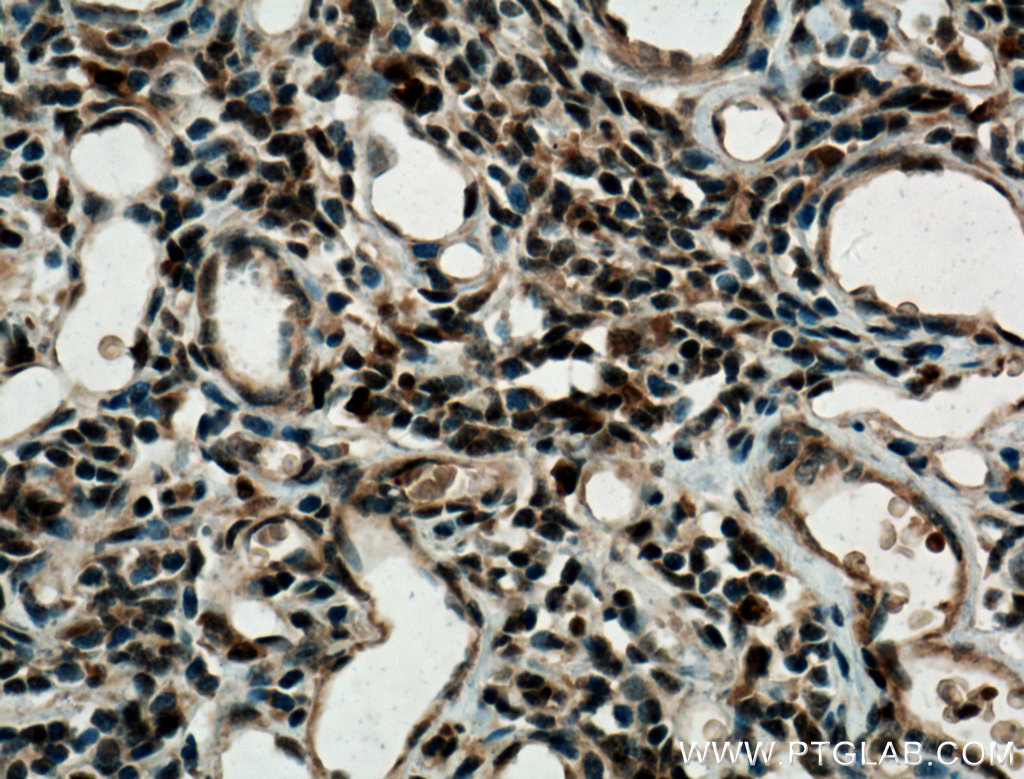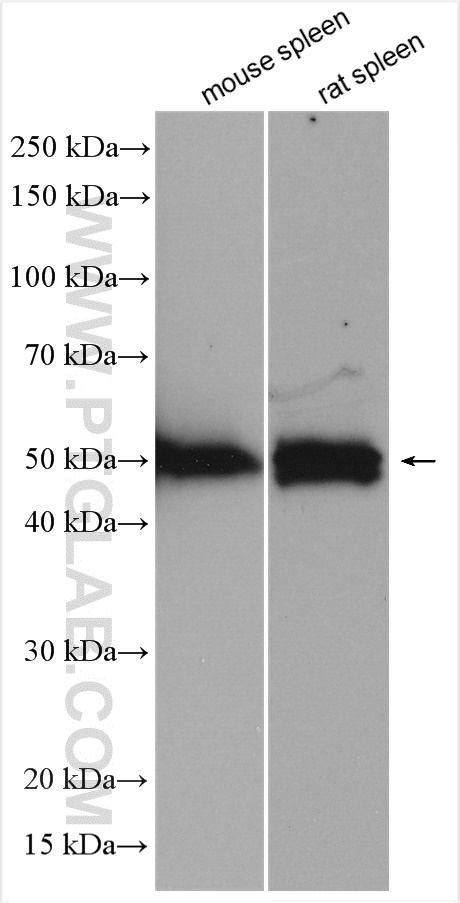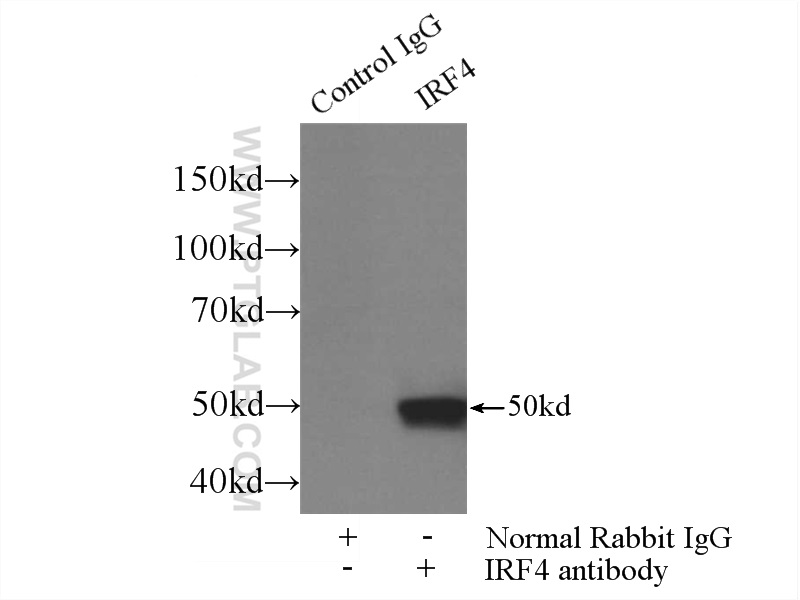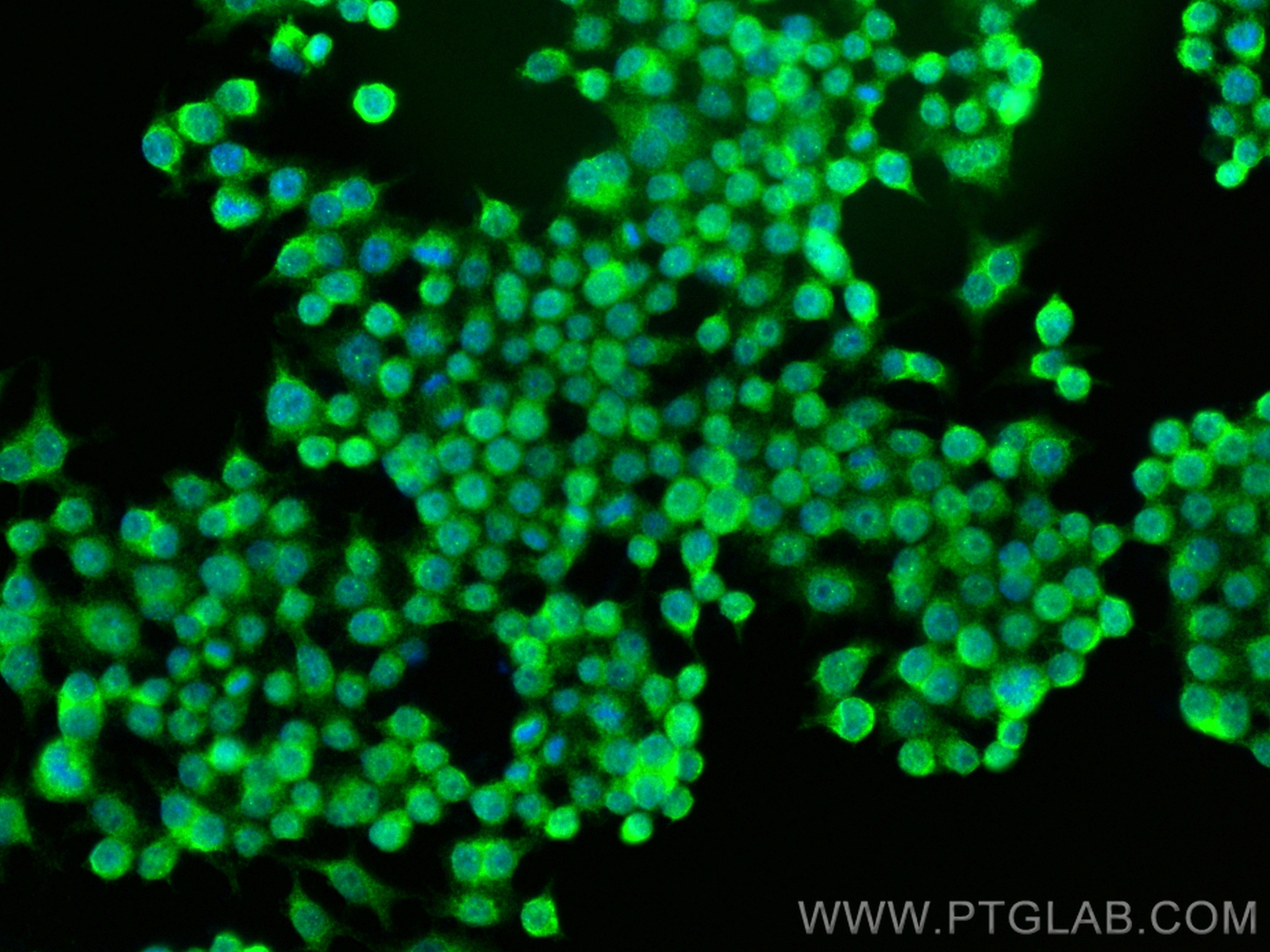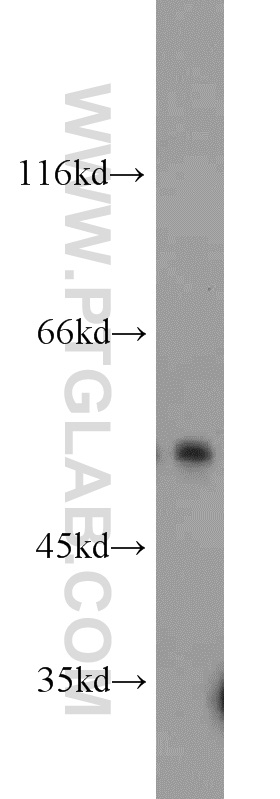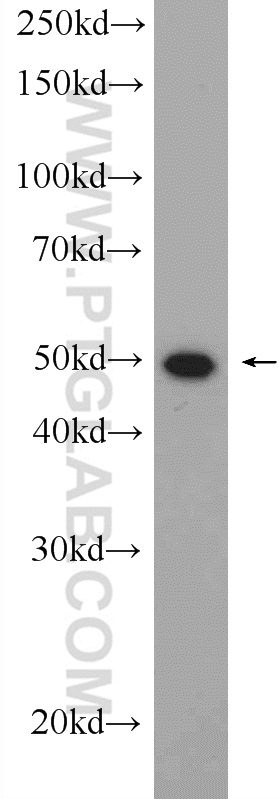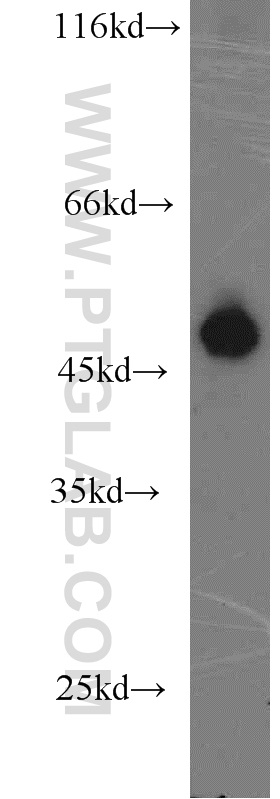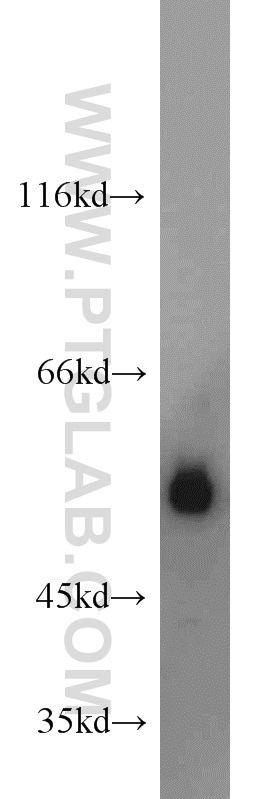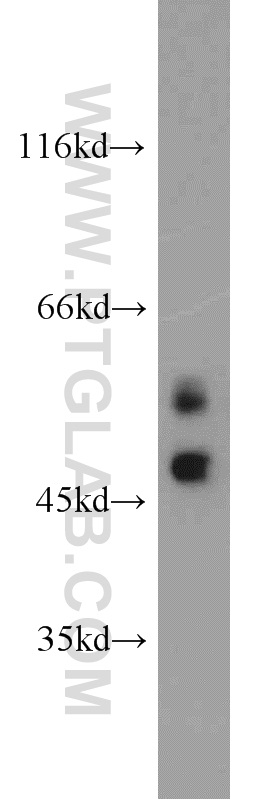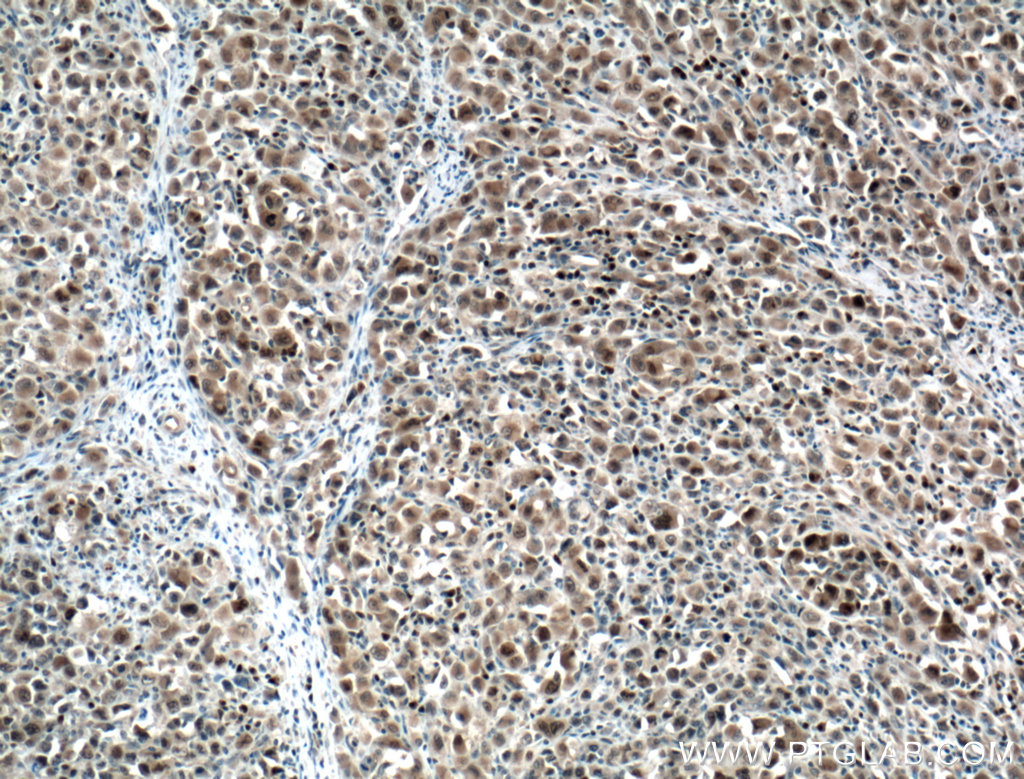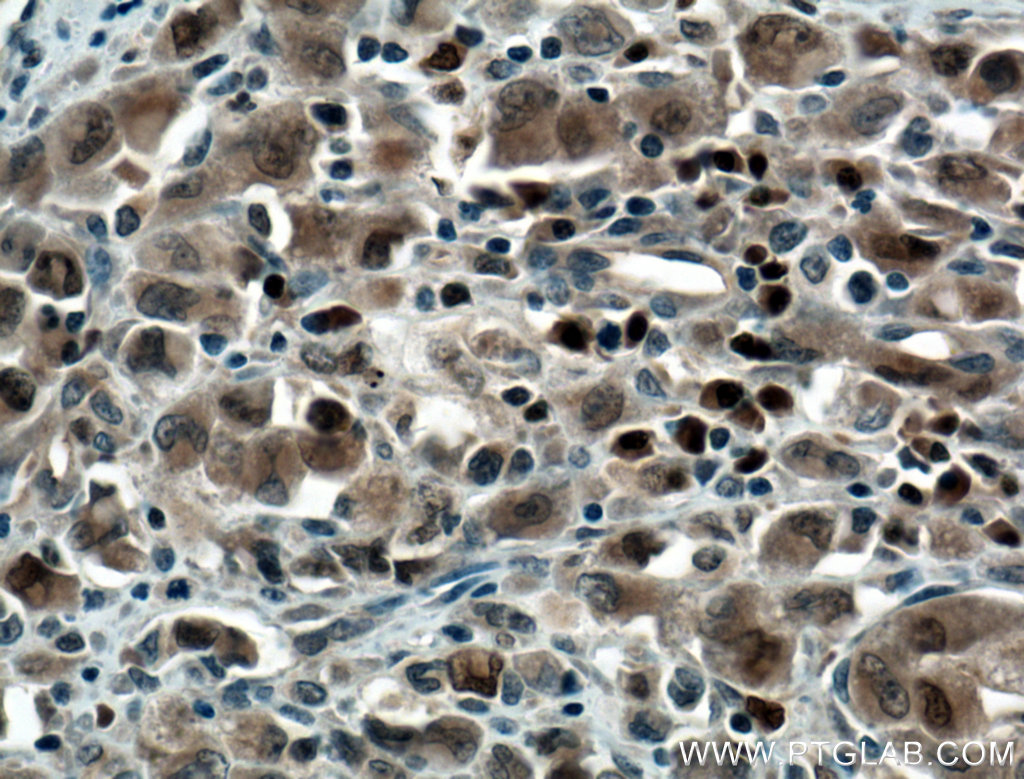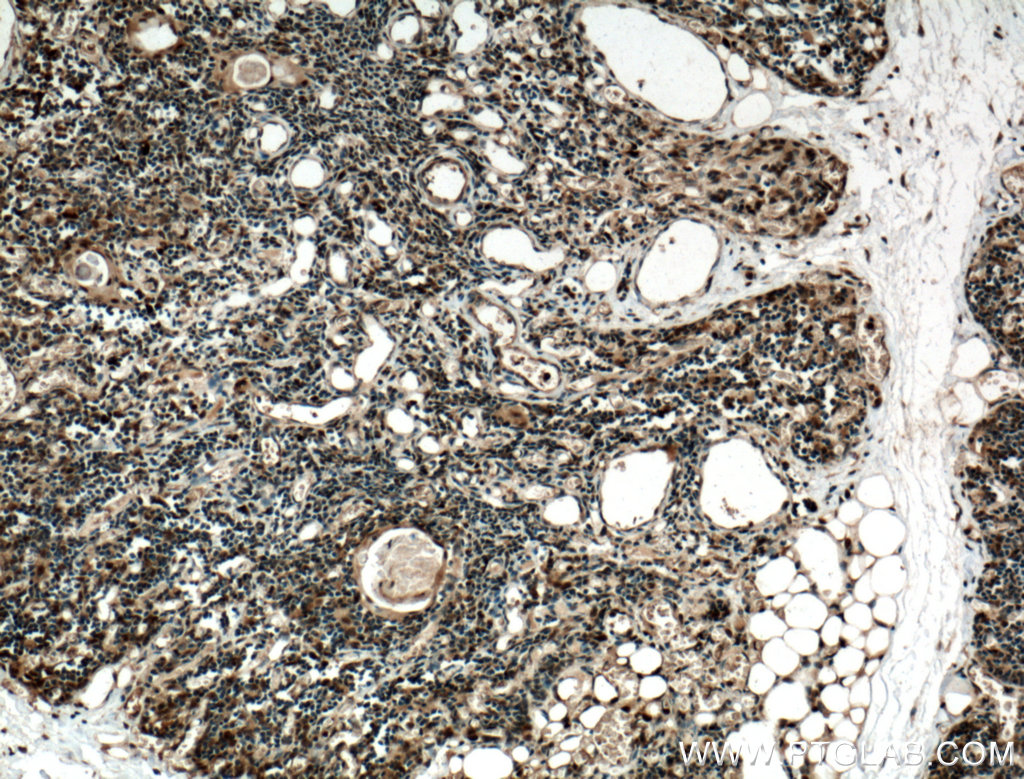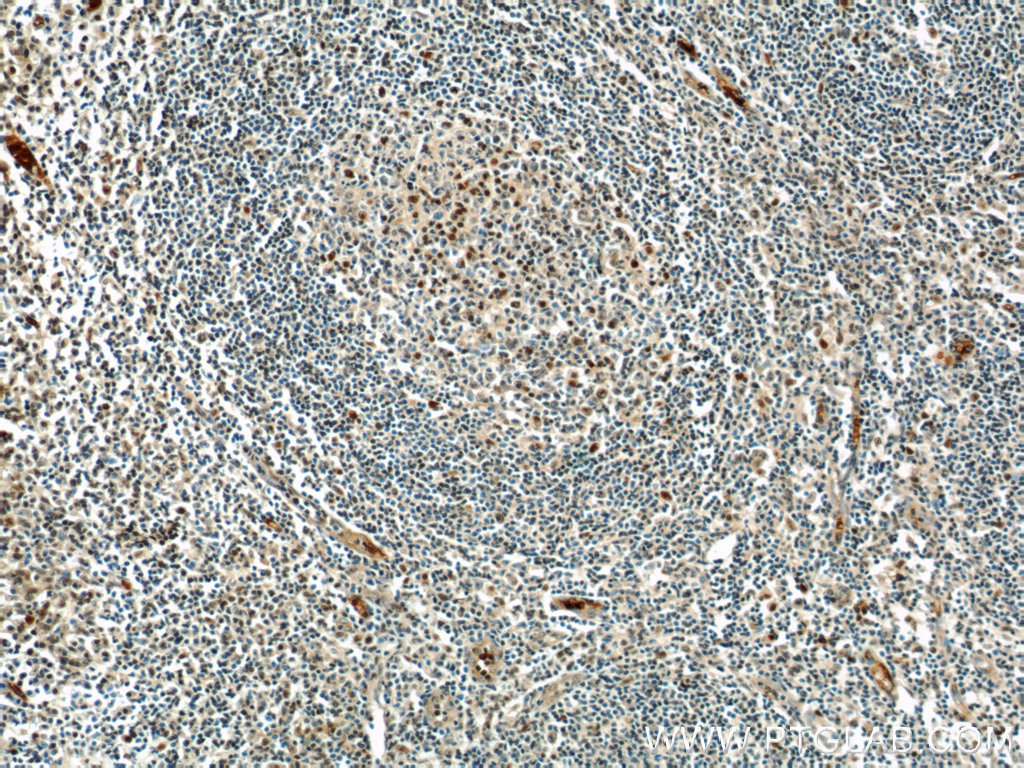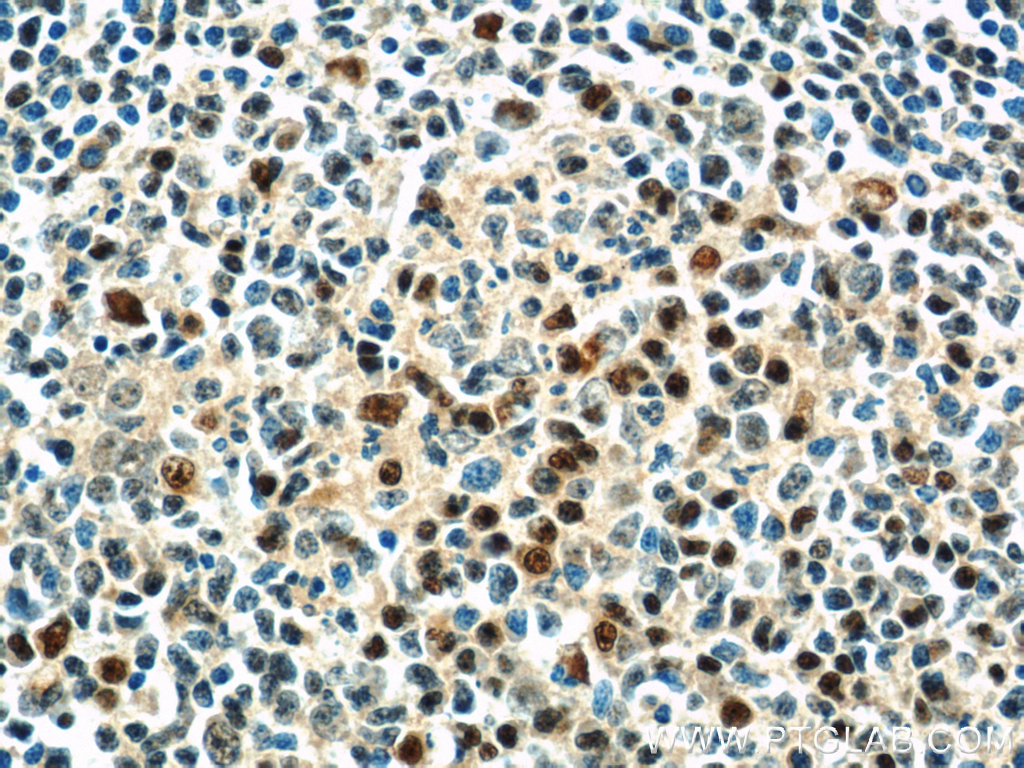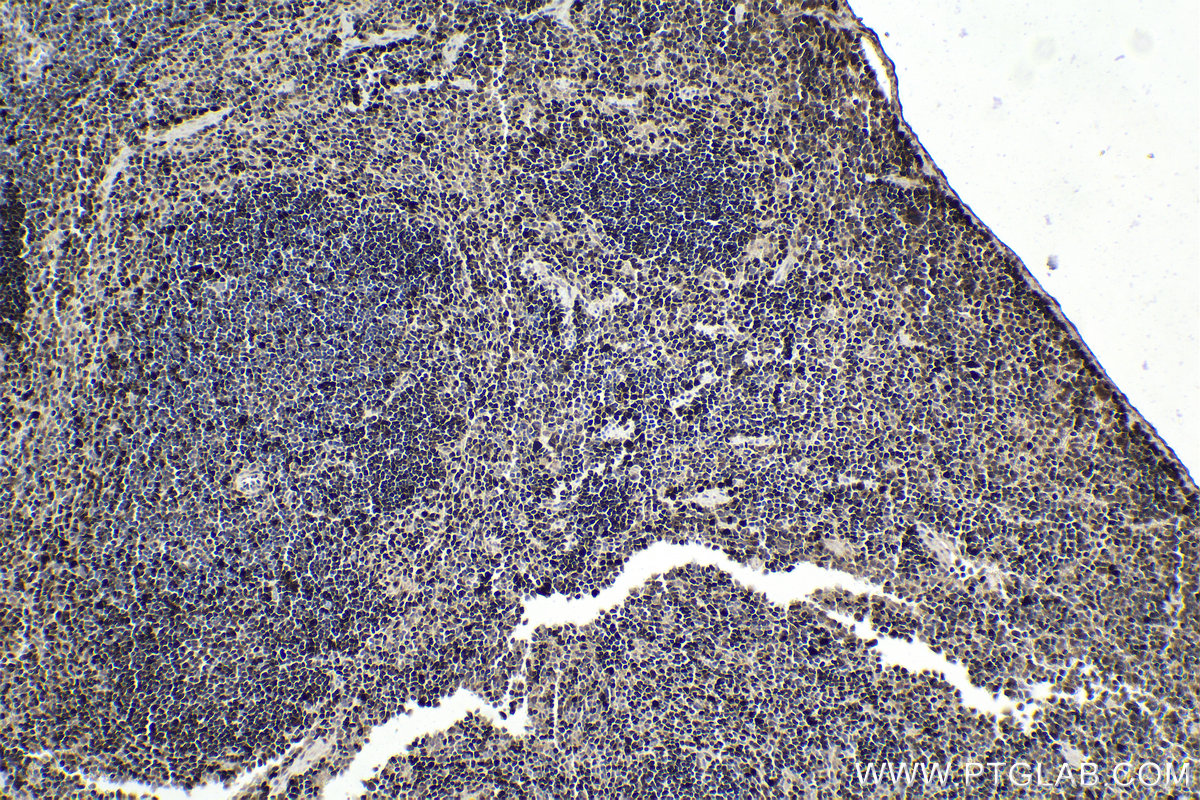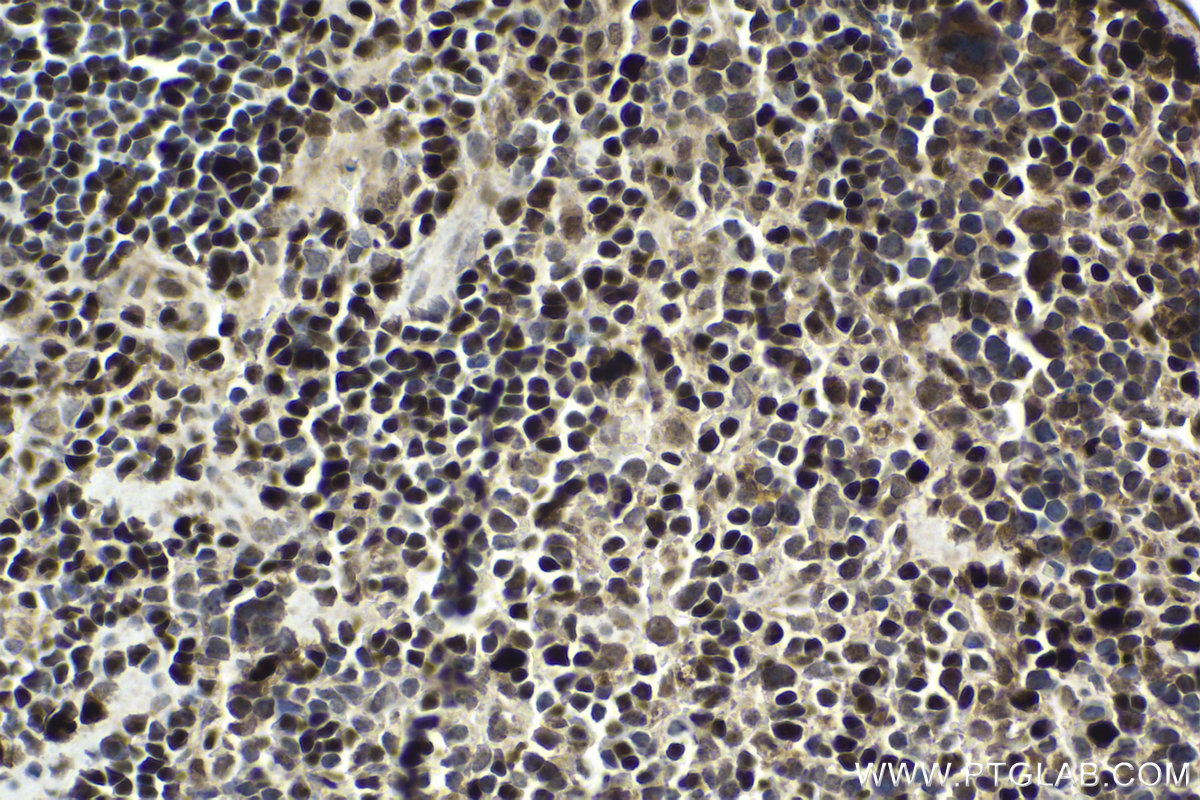验证数据展示
经过测试的应用
| Positive WB detected in | mouse spleen tissue, mouse lung tissue, mouse thymus tissue, Raji cells, RAW264.7, rat spleen tissue |
| Positive IP detected in | mouse spleen tissue |
| Positive IHC detected in | human thymus tissue, human lymphoma tissue, human tonsillitis tissue, mouse spleen tissue Note: suggested antigen retrieval with TE buffer pH 9.0; (*) Alternatively, antigen retrieval may be performed with citrate buffer pH 6.0 |
| Positive IF/ICC detected in | RAW 264.7 cells |
推荐稀释比
| 应用 | 推荐稀释比 |
|---|---|
| Western Blot (WB) | WB : 1:5000-1:50000 |
| Immunoprecipitation (IP) | IP : 0.5-4.0 ug for 1.0-3.0 mg of total protein lysate |
| Immunohistochemistry (IHC) | IHC : 1:50-1:500 |
| Immunofluorescence (IF)/ICC | IF/ICC : 1:50-1:500 |
| It is recommended that this reagent should be titrated in each testing system to obtain optimal results. | |
| Sample-dependent, Check data in validation data gallery. | |
产品信息
11247-2-AP targets IRF4 in WB, IHC, IF/ICC, IP, ELISA applications and shows reactivity with human, mouse, rat samples.
| 经测试应用 | WB, IHC, IF/ICC, IP, ELISA Application Description |
| 文献引用应用 | WB, IHC, IF |
| 经测试反应性 | human, mouse, rat |
| 文献引用反应性 | human, mouse |
| 免疫原 |
CatNo: Ag1762 Product name: Recombinant human IRF4 protein Source: e coli.-derived, PGEX-4T Tag: GST Domain: 1-451 aa of BC015752 Sequence: MNLEGGGRGGEFGMSAVSCGNGKLRQWLIDQIDSGKYPGLVWENEEKSIFRIPWKHAGKQDYNREEDAALFKAWALFKGKFREGIDKPDPPTWKTRLRCALNKSNDFEELVERSQLDISDPYKVYRIVPEGAKKGAKQLTLEDPQMSMSHPYTMTTPYPSLPAQQVHNYMMPPLDRSWRDYVPDQPHPEIPYQCPMTFGPRGHHWQGPACENGCQVTGTFYACAPPESQAPGVPTEPSIRSAEALAFSDCRLHICLYYREILVKELTTSSPEGCRISHGHTYDASNLDQVLFPYPEDNGQRKNIEKLLSHLERGVVLWMAPDGLYAKRLCQSRIYWDGPLALCNDRPNKLERDQTCKLFDTQQFLSELQAFAHHGRSLPRFQVTLCFGEEFPDPQRQRKLITAHVEPLLARQLYYFAQQNSGHFLRGYDLPEHISNPEDYHRSIRHSSIQE 种属同源性预测 |
| 宿主/亚型 | Rabbit / IgG |
| 抗体类别 | Polyclonal |
| 产品类型 | Antibody |
| 全称 | IRF 4 |
| 别名 | MUM1/IRF4, interferon regulatory factor 4, IRF 4, IRF-4, LSIRF |
| 计算分子量 | 52 kDa |
| 观测分子量 | 52 kDa |
| GenBank蛋白编号 | BC015752 |
| 基因名称 | IRF4 |
| Gene ID (NCBI) | 3662 |
| ENSEMBL Gene ID | ENSG00000137265 |
| RRID | AB_2264940 |
| 偶联类型 | Unconjugated |
| 形式 | Liquid |
| 纯化方式 | Antigen affinity purification |
| UNIPROT ID | Q15306 |
| 储存缓冲液 | PBS with 0.02% sodium azide and 50% glycerol, pH 7.3. |
| 储存条件 | Store at -20°C. Stable for one year after shipment. Aliquoting is unnecessary for -20oC storage. |
背景介绍
IRF4 is a member of the IRF family of transcription factors, expressed in most cell types of the immune system. IRF4 is a transcription factor essential for the development of T helper-2 (Th2) cells, IL17-producing Th17 cells, and IL9-producing Th9 cells, as well as dendritic cell (DC). It binds to and activates the ISRE of the MHC class I promoter, and may have a role in ISRE-targeted signal transduction mechanisms specific to lymphoid cells.
实验方案
| Product Specific Protocols | |
|---|---|
| IF protocol for IRF4 antibody 11247-2-AP | Download protocol |
| IHC protocol for IRF4 antibody 11247-2-AP | Download protocol |
| IP protocol for IRF4 antibody 11247-2-AP | Download protocol |
| WB protocol for IRF4 antibody 11247-2-AP | Download protocol |
| Standard Protocols | |
|---|---|
| Click here to view our Standard Protocols |
发表文章
| Species | Application | Title |
|---|---|---|
Cancer Commun (Lond) Targeting autophagy overcomes cancer-intrinsic resistance to CAR-T immunotherapy in B-cell malignancies | ||
Sci Transl Med Targeting the origins of multiple myeloma along hematopoietic stem cell lymphoid lineage differentiation | ||
Diabetes Obese Skeletal Muscle-Expressed Interferon Regulatory Factor 4 Transcriptionally Regulates Mitochondrial Branched-Chain Aminotransferase Reprogramming Metabolome.
| ||
Nanotoxicology Macrophage polarization and activation at the interface of multi-walled carbon nanotube-induced pulmonary inflammation and fibrosis. | ||
Diabetes Res Clin Pract fMaggot treatment promotes healing of diabetic foot ulcer wounds possibly by upregulating Treg levels. | ||
Int Immunopharmacol IRF-4 deficiency reduces inflammation and kidney fibrosis after folic acid-induced acute kidney injury.
|

